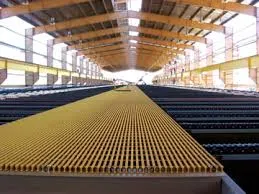
-
 Afrikaans
Afrikaans -
 Albanian
Albanian -
 Amharic
Amharic -
 Arabic
Arabic -
 Armenian
Armenian -
 Azerbaijani
Azerbaijani -
 Basque
Basque -
 Belarusian
Belarusian -
 Bengali
Bengali -
 Bosnian
Bosnian -
 Bulgarian
Bulgarian -
 Catalan
Catalan -
 Cebuano
Cebuano -
 China
China -
 China (Taiwan)
China (Taiwan) -
 Corsican
Corsican -
 Croatian
Croatian -
 Czech
Czech -
 Danish
Danish -
 Dutch
Dutch -
 English
English -
 Esperanto
Esperanto -
 Estonian
Estonian -
 Finnish
Finnish -
 French
French -
 Frisian
Frisian -
 Galician
Galician -
 Georgian
Georgian -
 German
German -
 Greek
Greek -
 Gujarati
Gujarati -
 Haitian Creole
Haitian Creole -
 hausa
hausa -
 hawaiian
hawaiian -
 Hebrew
Hebrew -
 Hindi
Hindi -
 Miao
Miao -
 Hungarian
Hungarian -
 Icelandic
Icelandic -
 igbo
igbo -
 Indonesian
Indonesian -
 irish
irish -
 Italian
Italian -
 Japanese
Japanese -
 Javanese
Javanese -
 Kannada
Kannada -
 kazakh
kazakh -
 Khmer
Khmer -
 Rwandese
Rwandese -
 Korean
Korean -
 Kurdish
Kurdish -
 Kyrgyz
Kyrgyz -
 Lao
Lao -
 Latin
Latin -
 Latvian
Latvian -
 Lithuanian
Lithuanian -
 Luxembourgish
Luxembourgish -
 Macedonian
Macedonian -
 Malgashi
Malgashi -
 Malay
Malay -
 Malayalam
Malayalam -
 Maltese
Maltese -
 Maori
Maori -
 Marathi
Marathi -
 Mongolian
Mongolian -
 Myanmar
Myanmar -
 Nepali
Nepali -
 Norwegian
Norwegian -
 Norwegian
Norwegian -
 Occitan
Occitan -
 Pashto
Pashto -
 Persian
Persian -
 Polish
Polish -
 Portuguese
Portuguese -
 Punjabi
Punjabi -
 Romanian
Romanian -
 Russian
Russian -
 Samoan
Samoan -
 Scottish Gaelic
Scottish Gaelic -
 Serbian
Serbian -
 Sesotho
Sesotho -
 Shona
Shona -
 Sindhi
Sindhi -
 Sinhala
Sinhala -
 Slovak
Slovak -
 Slovenian
Slovenian -
 Somali
Somali -
 Spanish
Spanish -
 Sundanese
Sundanese -
 Swahili
Swahili -
 Swedish
Swedish -
 Tagalog
Tagalog -
 Tajik
Tajik -
 Tamil
Tamil -
 Tatar
Tatar -
 Telugu
Telugu -
 Thai
Thai -
 Turkish
Turkish -
 Turkmen
Turkmen -
 Ukrainian
Ukrainian -
 Urdu
Urdu -
 Uighur
Uighur -
 Uzbek
Uzbek -
 Vietnamese
Vietnamese -
 Welsh
Welsh -
 Bantu
Bantu -
 Yiddish
Yiddish -
 Yoruba
Yoruba -
 Zulu
Zulu
frp stub flange
Understanding FRP Stub Flanges An Overview
In the realm of modern engineering and construction, the materials and techniques used can significantly enhance the efficiency, longevity, and performance of various systems. One such element that has gained attention is the Fiberglass Reinforced Plastic (FRP) stub flange. This component plays a critical role in ensuring the integrity of piping systems, particularly in environments where traditional materials may falter.
What is FRP?
Fiberglass Reinforced Plastic is a composite material made of a polymer matrix reinforced with fiberglass. The combination results in a lightweight yet incredibly strong material that boasts excellent resistance to corrosion, chemicals, and temperature extremes. These properties make FRP a popular choice in various industries, including chemical processing, water treatment, and oil and gas.
The Role of Stub Flanges
A stub flange serves as a connecting piece that allows for the attachment of piping systems to various other components, such as tanks, vessels, or additional piping. Unlike standard flanges that may have a raised face or other features, stub flanges are typically smooth and cylindrical, projecting from the pipe.
By using FRP stub flanges, engineers can take advantage of the beneficial properties of both FRP and flange designs. They are particularly well-suited for systems where minimizing weight and reducing corrosion are critical. In many industries, the longevity of components translates directly into lower maintenance costs and improved system reliability.
Advantages of FRP Stub Flanges
1. Corrosion Resistance One of the most significant benefits of FRP materials is their natural resistance to corrosion. This feature is especially advantageous in harsh environments, such as chemical processing facilities or coastal areas where saltwater exposure is a concern. FRP stub flanges maintain their structural integrity much longer than metal counterparts in these aggressive conditions.
frp stub flange

2. Lightweight Nature FRP stub flanges are considerably lighter than their metal equivalents. This weight reduction can lead to easier handling, reduced transportation costs, and less struggle during installation. The lightweight design also reduces the overall load on supporting structures.
3. Thermal Insulation Fiberglass does not conduct heat in the same way as metals do. As a result, FRP stub flanges can help in minimizing heat transfer, which is crucial in temperature-sensitive applications. This can be particularly beneficial in cooling or heating systems where efficiency is paramount.
4. Ease of Installation The design of FRP stub flanges tends to facilitate quicker and more straightforward installation. They can often be installed using standard bolting techniques, requiring less specialized equipment or skills compared to other materials.
5. Long-term Cost Efficiency Although the initial cost of FRP materials can be higher than traditional metals, the long-term savings due to reduced repair, maintenance, and replacement needs often justify this upfront expense. This cost-effectiveness makes FRP stub flanges an attractive option for many industries.
Applications of FRP Stub Flanges
FRP stub flanges find applications in several sectors. In wastewater treatment plants, for example, they are utilized where effluents can cause significant damage to standard flanges. Their use is similarly prevalent in chemical processing industries where aggressive substances would otherwise corrode metal components. Moreover, in the oil and gas sector, where pipeline integrity is paramount, FRP stub flanges contribute to safer and more reliable operations.
Conclusion
In summary, FRP stub flanges represent a significant advancement in piping technology. Their combination of corrosion resistance, lightweight properties, thermal insulation, ease of installation, and overall cost efficiency make them an excellent choice for various applications across numerous industries. As more engineers and decision-makers recognize the benefits of integrating FRP materials into their systems, it is probable that the adoption of FRP stub flanges will continue to rise, leading to safer, more efficient, and more durable installations. As the engineering field evolves, innovations like these signal a shift toward sustainable practices that enhance the longevity and reliability of essential systems.









